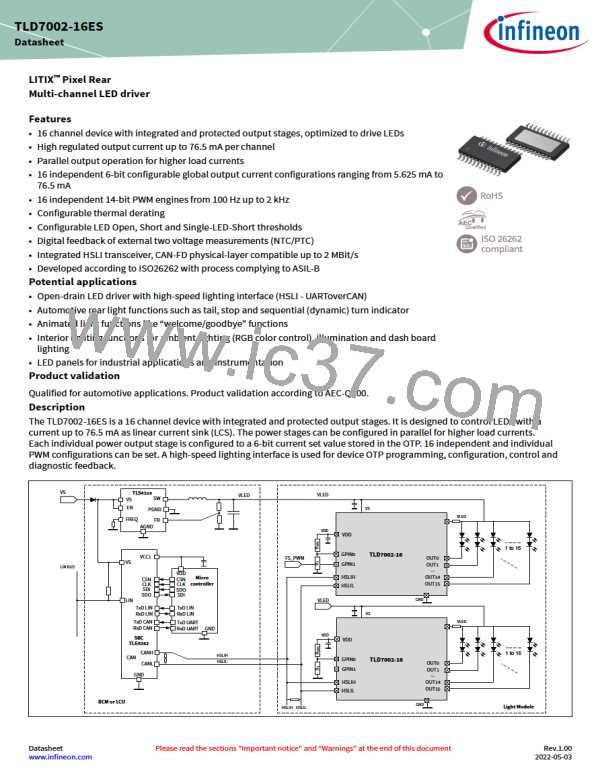TLD7002-16ES
Datasheet
9 Communication interface
9
Communication interface
The device provides a UART-based protocol HSLI, where the LCU can write and read registers to and from each device
sharing the same bus.
The device provides the OTP programming and OTP emulation functions via the HSLI interface.
9.1
Protocol layer - High Speed Lighting Interface
General description
9.1.1
The High-speed Lighting Interface (HSLI) is a digital interface for high performance automotive applications. The
interface data link layer is based on a standard universal asynchronous receiver transmitter (UART) bit stream. The
protocol is designed to support direct device-to-µC connections as well as CAN-FD transceivers to implement a robust
connection scheme for remote control applications. Thanks to the lean protocol implementation, high update rates
can be achieved despite limited bandwidth especially with remote interfaces.
9.1.2
Main features
The HSLI is a cost efficient interface for high performance automotive applications. HSLI can be used as highly flexible
interface for transferring data.
•
•
•
•
•
Single master, multiple slave concept
Synchronization of single or multiple slaves
Supports bus configurations with up to 31 addressable slaves and 1 broadcast address
Bidirectional communication
Auto-bit rate detection within the range from 200 kbit/s up to 2 Mbit/s when LP_INIT='0' or up to 500 kbit/s when
LP_INIT='1'.
9.1.3
Frame structure
The frame consists of a number of bytes:
•
•
•
•
one sync byte
one master request
followed by 0 to n master data bytes
and 0 to n slave data bytes
The structure of a full communication frame is shown below:
Figure 17
Structure of a frame
9.1.4
HSLI interframe delay
The HSLI aborts processing the communication when no dominant ("0") bus communication occurred longer than
the interfame delay tframedly. The master needs to wait longer than tframedly between two consecutive frames.
The interframe delay is configurable via the OTP according to following table:
Datasheet
47
Rev.1.00
2022-05-03

 INFINEON [ Infineon ]
INFINEON [ Infineon ]